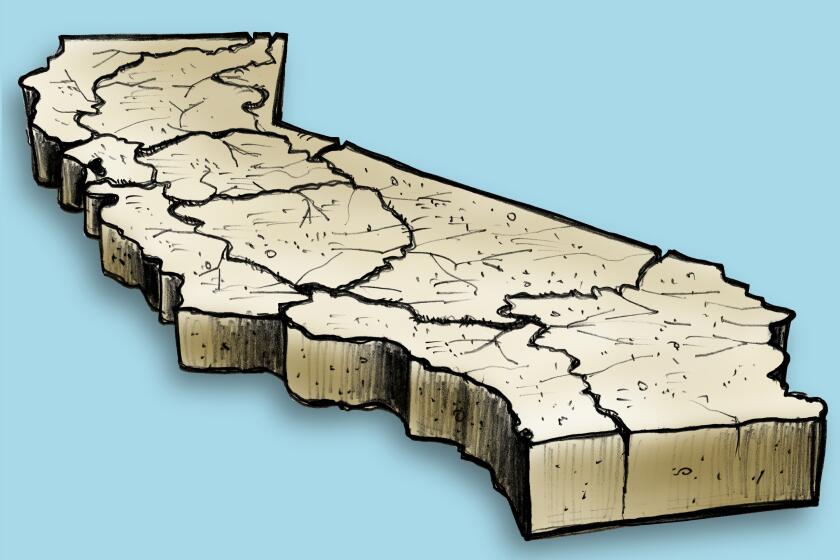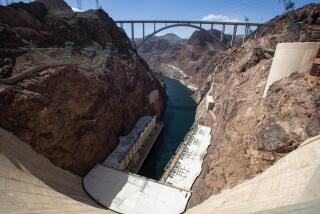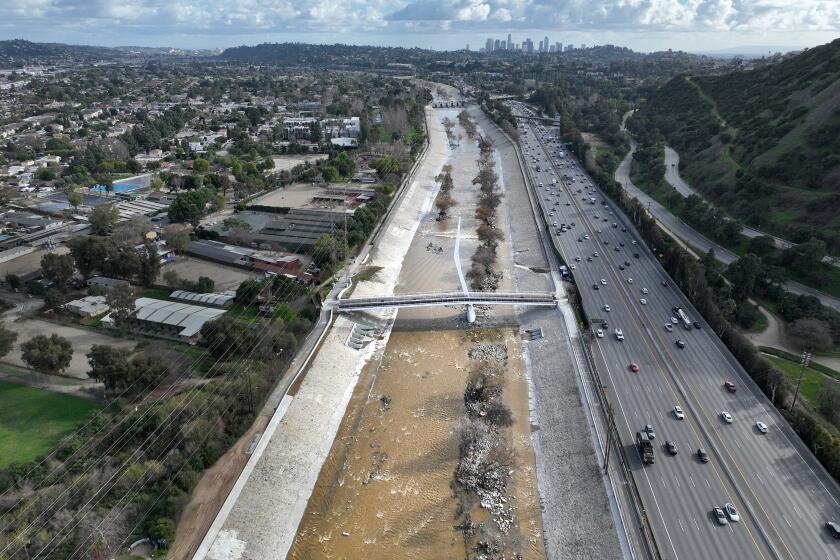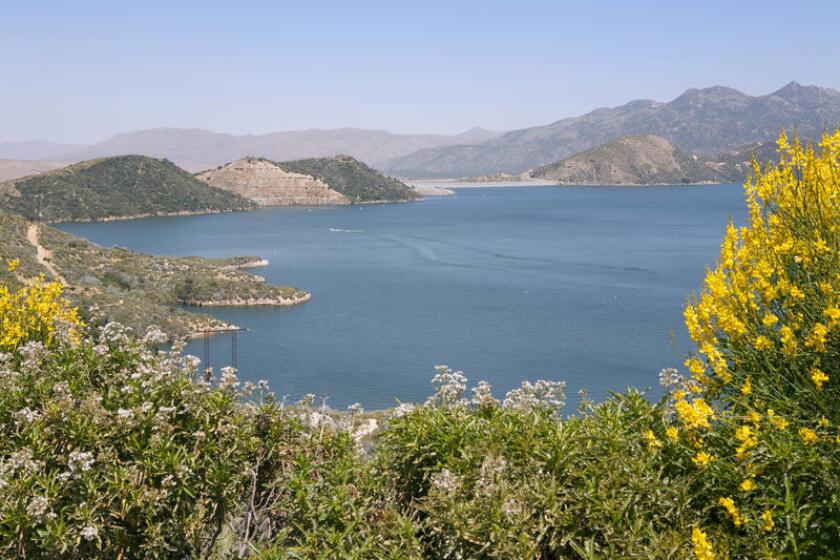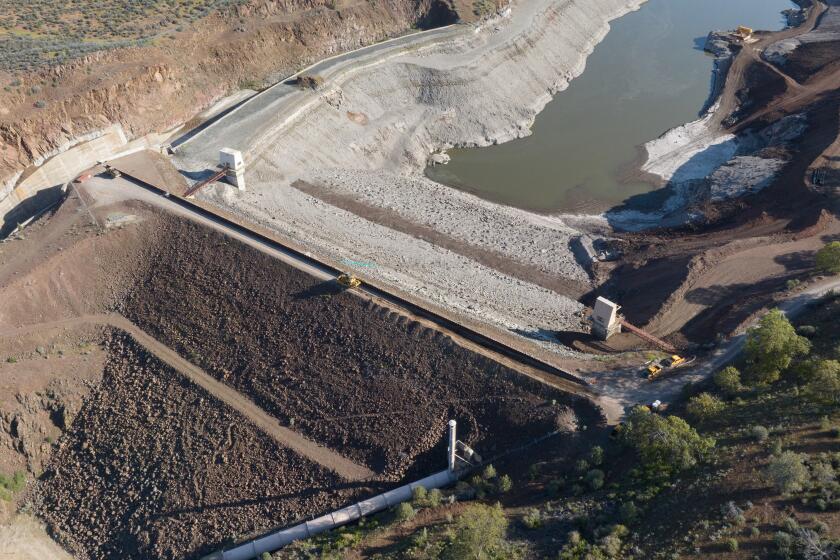Sweeping California water conservation rules could force big cuts in some areas
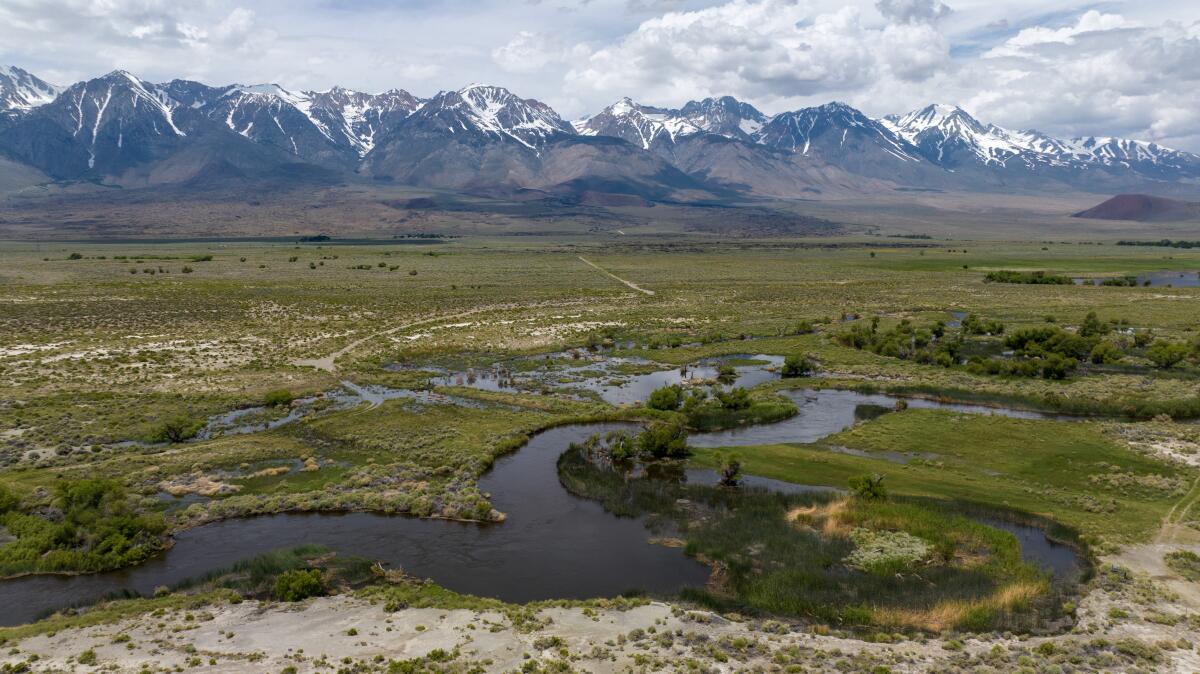
With California facing a hotter and drier future — punctuated by bouts of extreme weather — state officials are moving forward with a new framework for urban water use that could require some suppliers to make cuts of 20% or more as soon as 2025.
Many of the suppliers facing the harshest cuts are located in the Central Valley and in the southeastern part of the state — large, hot and primarily rural areas that have historically struggled to meet conservation targets.
In Los Angeles, where the Department of Water and Power has reported significant conservation gains over the last decade, new reductions wouldn’t take effect until 2030, according to state data. Other neighboring water suppliers, such as the city of Beverly Hills and the Las Virgenes Municipal Water District, would be required to make cuts of 18% and 13% within two years, respectively.
The proposed regulation, dubbed “Making Conservation a California Way of Life,” would establish tailored goals for each urban retail water supplier in the state, providing them with more flexibility to account for local conditions, according to the State Water Resources Control Board.
The move marks a shift away from the one-size-fits-all approach that has governed California water for years. If adopted, the new rules would require the state’s more than 400 urban water suppliers to come up with a new water-use budget every year beginning in 2025. They could face hefty fines for failing to comply or meet their targets.
The regulation stems from two landmark 2018 bills that directed the state to adopt new standards, including permanent water-consumption goals.
“That legislation, and the board’s regulation, really mark a turning point and a major improvement in state water conservation policy,” said Eric Oppenheimer, the board’s chief deputy director.
Between July 2021 and March of this year, statewide water savings were about 7%, a Los Angeles Times analysis has found.
Past policies often applied uniform reductions across the state, such as the 20 x 2020 plan, which called for a 20% per capita reduction by 2020.
The new approach will enable suppliers to weigh local factors such as climate conditions, population and lot size — and to account for past investments in conservation, Oppenheimer said.
“It incorporates more of a water-budget-based approach, so it does a much better job of accounting for each of these unique characteristics,” he said.
The approach means some regions will face much stronger cuts in order to comply.
Nearly 230 agencies serving 27 million urban water users in the state are already on track to meet 2025 standards, according to provisional data released by the water board. But at least 36 agencies serving about 1.42 million users will need to make significant reductions of 20% or more to meet the target.
The targets are based on a formula that calculates efficient indoor and outdoor water use, leak losses and other factors. Targets may also include variances for unique local conditions — such as areas with high livestock populations — and bonuses for investments in water recycling and other incentives.
The standard for indoor water use will be 47 gallons per person per day by 2025 and drop to 42 gallons per person per day in 2030.
“I think the standards are important for helping communities be better prepared for a hotter, drier climate,” said Heather Cooley, research director at the Pacific Institute, a water think tank in Oakland. “This is an important step in the right direction in helping communities become more resilient.”
Cooley and other researchers estimated in a report last year that California could shrink total urban water use by 30% or more using existing technologies and practices to improve water efficiency.
She said the efforts that have gone into developing the targets thus far, such as gathering data on differences in local climate conditions and development patterns, have helped to create a customized approach for tracking efficiency, something that will help cities and agencies tailor their policies.
“Certainly, the data aren’t perfect. And I think it’s important to continue improving data collection and our understanding of our urban spaces over time,” Cooley said. “But I think it does provide new tools for water suppliers to better manage water resources across the state.”
Suppliers facing heavy cuts include the Oildale Mutual Water Co. and the West Kern Water District in the Tulare Lake region, as well as the Central Valley cities of Livingston, Riverbank, Kingsburg and Lemoore, which each face cuts of 30% or more to meet the 2025 standards.
The city of Brawley and the Desert Water Agency in the southeastern Colorado River district both face cuts of 21% by 2025.
The latest maps and charts on the California drought, including water usage, conservation and reservoir levels.
The projected reductions would affect an increasing number of Californians as the years go on.
In 2035, 18% of urban water users would live in areas required to reduce by 30% or more. By that time, suppliers serving more than half of urban water users would need to cut back by at least 10%.
Suppliers could face fines of up to $1,000 a day for failing to meet targets, or as much as $10,000 a day during drought emergencies, according to the board.
Experts said the more customized approach to conservation makes sense.
“The water-supplier-tailored approach is very important in California,” said Cody Phillips, policy analyst with the California Coastkeeper Alliance. “California is a huge state with tons of different climates, and to say that what is an efficient use of water in a wet coastal area is the same exact efficient use of water in a dry desert area is just not workable, and it doesn’t make sense.”
Much of the Los Angeles area — along with much of the San Francisco Bay Area and portions of wet Northern California — have already made significant conservation gains and will face fewer reductions as the framework rolls out.
The Los Angeles Department of Water and Power, for example, will need no reductions to meet the 2025 standard; a 9% reduction to meet the 2030 standard and a 12% reduction to meet the 2035 standard, the data show.
However some suppliers in the South Coast region do face major cuts, including the city of Glendora in Los Angeles County, which will require a 28.5% reduction just to meet the 2025 target, the data show.
Phillips said he has heard some suppliers express concern that outdoor targets are not feasible — at least not in the immediate term. Outdoor water accounts for the lion’s share of urban use, but achieving significant gains in that category requires big investments, such as replacing lawns with more drought-tolerant landscaping, which can take considerable time and money.
“That’s been one of the main debates that’s been happening at the water board,” Phillips said.
Cooley, of the Pacific Institute, said the targets are achievable, broadly speaking.
“They will require communities to make changes, but they are changes that will make them more resilient and less vulnerable to climate change,” she said. She said she hopes the targets are combined “with capacity building, with incentives, with financial support to be able to achieve them.”
The framework could save more than 400,000 acre-feet of water per year as soon as 2030, according to the board — or enough water for more than a million households.
Suppliers might employ a variety of tools to help meet the targets, including improved leak detection, rate reforms, watering rules, rebates for efficient appliances or incentives for replacing lawns, board officials said.
They noted that the more flexible framework is needed as California continues to experience large swings between drought and flooding due to human-caused climate change — a phenomenon known as weather whiplash.
“The regulation really represents an important opportunity to save the state a substantial amount of water,” said Charlotte Ely, the board’s climate strategy advisor. “And in doing that, it’s just going to help better position California to adapt to the water supply challenges that we know climate change is going to bring.”
Indeed, past calls for uniform conservation efforts have met with mixed results. During the 2012-2016 drought, former Gov. Jerry Brown ordered 25% cuts across the state, and residents largely responded — reducing water use by 24.5%.
But during the most recent drought, which ended after this year’s wet winter, urban water users fell far short of Gov. Gavin Newsom’s request to voluntarily reduce water use by 15%.
Statewide savings were 7% — less than half of Newsom’s target — and varied widely by region, with the North Coast saving the most, 14%, and the Colorado River region saving the least, 2%.
In a water-supply strategy released last year, Newsom called for a series of actions to prepare the state for an estimated 10% decrease in California’s water supply by 2040 because of higher temperatures and decreased runoff.
The move to boost water efficiency in cities doesn’t diminish the importance of also managing water use in agriculture, which accounts for much of California’s annual water use, Cooley said.
“This is about all sectors taking action to help make California more resilient,” she said. “And it may look different depending on if you’re an urban area or an agricultural area. But I think this underscores the importance of efficiency toward helping to meet our goals.”
The formal rule-making process for the new framework began in August and will include a public comment period and public hearing. If adopted, the framework would become effective Oct. 1, 2024.

